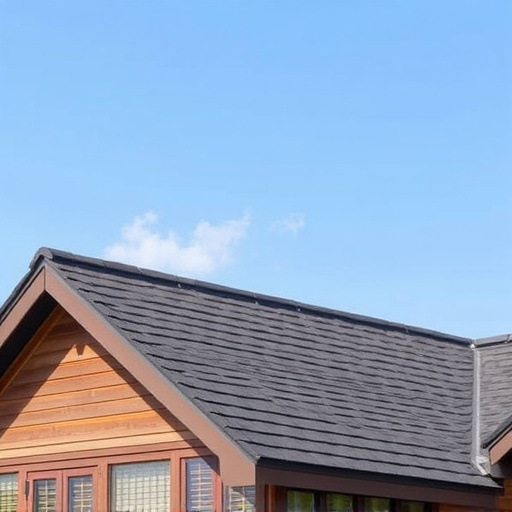This text explores the crucial decision between flat and pitched roofs, highlighting their distinct features and implications for choosing roofing materials. Key takeaways include:
– Flat Roofs: Gaining popularity for modern aesthetics, simplicity, cost-effectiveness, and easier installation. However, they're susceptible to weather damage, require meticulous maintenance, and demand careful material selection for longevity. Ideal for energy efficiency and rooftop gardens in milder climates.
– Pitched Roofs: Offer superior durability, better water drainage, and a wider range of styling options. They're more suitable for regions with extreme weather conditions. While traditional materials like shingles are visually appealing but fragile, long-lasting alternatives like metal or flat roof systems provide better durability and reduced upkeep needs.
– Material Considerations: Longevity, climate, and personal design preferences guide choosing roofing materials. Flat roofs benefit from green or reflective options for performance optimization, while pitched roofs prioritize durable choices that align with architectural style and protect against environmental elements.
Ultimately, the best choice balances aesthetic appeal, functional needs, and climate considerations to ensure a home's protection and curb appeal.
When it comes to choosing roofing materials, homeowners often find themselves deciding between flat roofs and pitched roofs. This fundamental decision impacts not only structural integrity but also cost, maintenance, and aesthetic appeal. In this comprehensive guide, we’ll dissect the pros and cons of each roof style. From durability and energy efficiency to ease of installation and longevity, we’ll explore key factors that influence your choice, helping you make an informed decision tailored to your climate and roofing needs.
- Understanding Flat and Pitched Roofs: A Basic Overview
- Advantages of Flat Roofs: Simplicity and Cost-Effectiveness
- Disadvantages of Flat Roofs: Vulnerability and Maintenance Needs
- Benefits of Pitched Roofs: Durability and Protection Against Elements
- Drawbacks of Pitched Roofs: Steeper Installation Costs and Complexity
- Choosing Based on Your Climate: Impact on Roof Selection
- Longevity Comparison: How Each Type Fares Over Time
- Aesthetic Considerations: Style and Design Implications
- Energy Efficiency: Which Roof Type Offers Better Insulation?
- Conclusion: Making an Informed Decision for Your Roofing Needs
Understanding Flat and Pitched Roofs: A Basic Overview
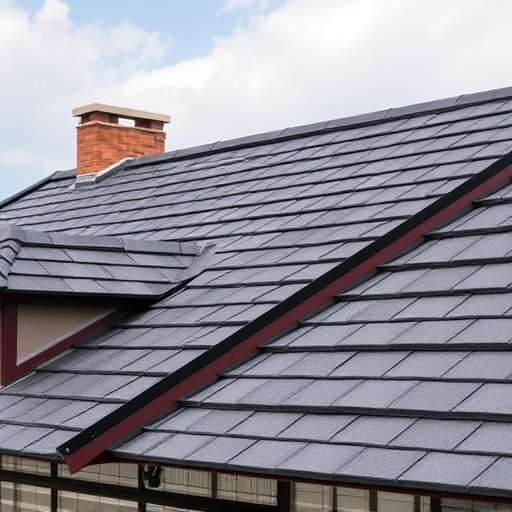
Roofs are a fundamental aspect of any building’s structure and design, offering protection from the elements while enhancing aesthetics. When it comes to choosing between flat and pitched roofs, understanding their unique characteristics is essential for homeowners or builders. Flat roofs, as the name suggests, have a level surface, making them a popular choice in modern architecture. They are often preferred for their simplicity, low maintenance requirements, and versatility in designing open spaces on top of buildings. On the other hand, pitched roofs feature slopes and angles, creating a more traditional aesthetic. This design allows for better water drainage, as rainwater is directed away from the building’s structure, reducing the risk of leaks and damage.
When considering roofing materials, the decision between flat and pitched roofs slightly influences the choices available. For instance, certain fire-resistant roofing systems are more suitable for pitched roofs due to their ability to manage sloped surfaces effectively. In contrast, flat roof materials comparison reveals a range of durable options tailored to level surfaces, ensuring longevity and resistance against environmental factors. The best durable roofing options for each style depend on factors like climate, local building codes, and personal aesthetic preferences.
Advantages of Flat Roofs: Simplicity and Cost-Effectiveness
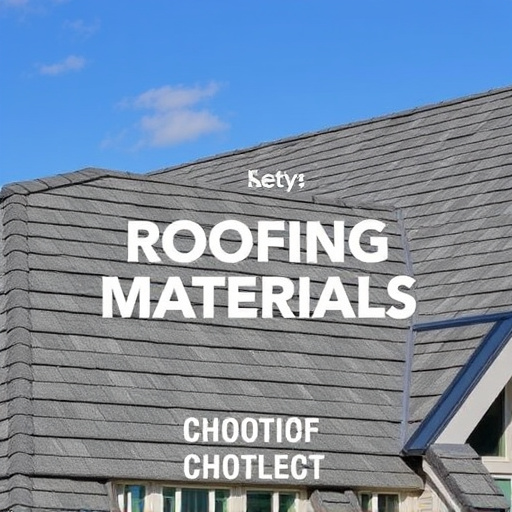
Flat roofs offer a sleek and modern aesthetic that can complement various house styles, making them an increasingly popular choice when it comes to choosing roofing materials. One of the primary advantages of flat roofs is their simplicity and cost-effectiveness. Installation is generally quicker and easier compared to pitched roofs, as there’s no need for steep angles or complex framing. This streamlined process translates into lower labor costs, making flat roofs a budget-friendly option for homeowners.
Additionally, flat roofing systems often utilize traditional asphalt shingles in styles that align with contemporary design trends, providing both functionality and visual appeal. The straightforward nature of these roofs also makes maintenance simpler and more affordable over time. By prioritizing simplicity and cost-effectiveness, homeowners can create a durable and stylish roof that enhances their living space without breaking the bank.
Disadvantages of Flat Roofs: Vulnerability and Maintenance Needs
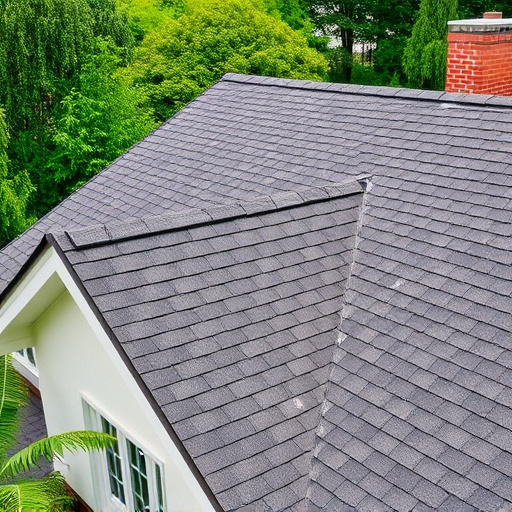
Flat roofs, while aesthetically appealing and suitable for modern architecture, come with their fair share of disadvantages. One significant concern is their vulnerability to damage from extreme weather conditions. Compared to pitched roofs, which are designed to shed water and snow, flat roofs offer less protection against heavy rainfall, hailstorms, and blizzards. This increased exposure can lead to leaks, puddling, and even structural damage over time.
Moreover, maintaining a flat roof requires meticulous care. Unlike pitched roofs that benefit from gravity’s assistance in draining water, flat roofs rely on proper sealing, drainage systems, and regular inspections. The process of repairing or replacing damaged membranes or flashing is often more complex and costly. Additionally, choosing the right roofing materials for flat roofs is crucial—considering options like tile roofing maintenance hacks, green roofing, or reflective roofing for heat reduction can extend their lifespan while ensuring optimal performance.
Benefits of Pitched Roofs: Durability and Protection Against Elements
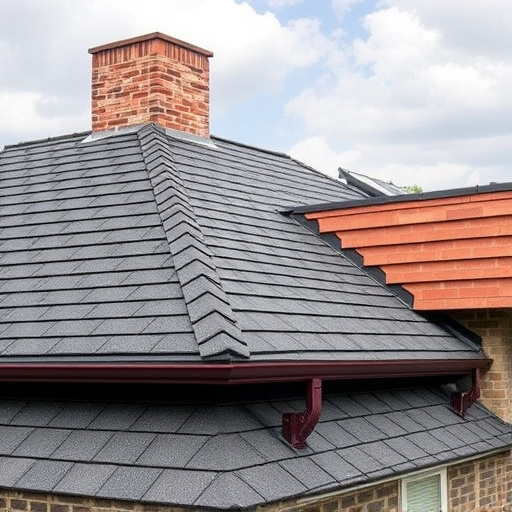
Pitched roofs offer several advantages when it comes to durability and protection against environmental elements. One of the key benefits is their superior resistance to harsh weather conditions, such as strong winds and heavy snowfall. The sloping design allows for better water drainage, preventing rainwater from pooling on the surface and reducing the risk of leaks or structural damage. This feature is particularly crucial in regions with significant seasonal changes, ensuring your home remains safe and secure throughout the year.
Moreover, pitched roofs provide a more extensive range of styling options compared to flat roofs. Metals roofing, for instance, comes in various styles and benefits, offering both aesthetic appeal and durability. When considering choosing roofing materials, pitched roofs give homeowners flexibility in aligning with their house style-appropriate roofing preferences while ensuring long-lasting protection, making them a preferred choice for many.
Drawbacks of Pitched Roofs: Steeper Installation Costs and Complexity

While pitched roofs are aesthetically pleasing and offer excellent protection against weather, they come with significant drawbacks when it comes to installation and maintenance. The steep angle requires specialized skills and equipment, driving up installation costs compared to flatter alternatives. This complexity also means more frequent repairs and replacements over the long term.
Choosing roofing materials for a pitched roof necessitates considering not just visual appeal but also practicality. Traditional options like shingles or tiles might look appealing but can be fragile and require frequent upkeep. Conversely, long-lasting roof material choices like metal or flat roof systems offer better durability, reduced maintenance needs, and even the potential for rooftop garden systems benefits, providing both functional and aesthetic advantages.
Choosing Based on Your Climate: Impact on Roof Selection
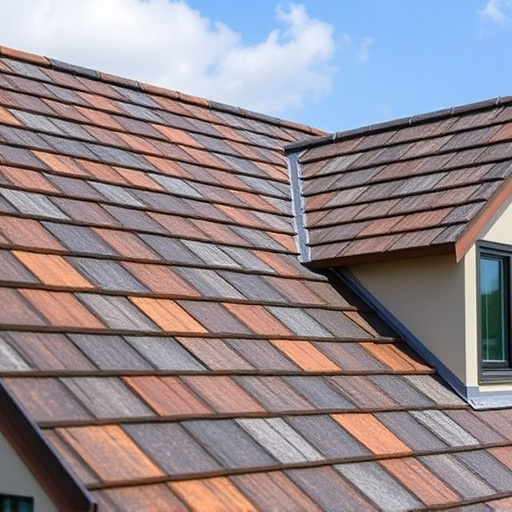
When choosing between a flat roof and a pitched roof, one of the most crucial factors to consider is your climate. Each type of roof has its own set of advantages and disadvantages that can significantly impact the overall durability and longevity of your roofing system. In regions with extreme weather patterns, such as heavy rainfall or snow, a pitched roof often proves more resilient. Its sloped design allows for better drainage, preventing water from pooling on the surface, which is crucial in resistingice build-up and minimizing damage caused by intense storms.
On the other hand, flat roofs are increasingly popular in urban areas where space is limited and energy-efficient roofing solutions are sought after. They offer a seamless, low-profiled appearance that can complement modern architecture. Moreover, rooftop garden systems can be easily integrated onto flat roofs, providing insulation benefits and contributing to a building’s overall sustainability. However, when it comes to choosing roofing materials, consider the climate-specific requirements. For instance, asphalt shingles are versatile and cost-effective but may not withstand extreme weather conditions, while slate roofing offers superior durability and aesthetic appeal but comes with a higher price tag.
Longevity Comparison: How Each Type Fares Over Time
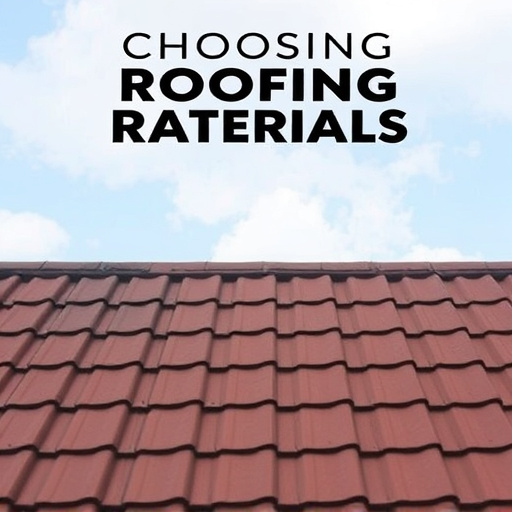
When comparing flat roofs to pitched ones, longevity is a significant factor in choosing roofing materials. Flat roofs, when properly maintained, can last for 20-30 years, offering a cost-effective option for those seeking long-term solutions. They are particularly advantageous in regions with milder climates and less extreme weather conditions. Conversely, pitched roofs typically surpass this lifespan, enduring between 30-50 years or even longer with quality installation and regular upkeep. This extended lifespan makes them a preferred choice for many homeowners.
Consideration of environmental factors also plays a role in your decision. Traditional asphalt shingles, often used for pitched roofs, have a relatively shorter lifespan compared to eco-friendly roofing alternatives like metal or flat roof membranes. While traditional shingles offer variety in terms of styles and colors, their constant exposure to changing weather conditions can lead to premature replacement. In contrast, newer eco-friendly options are designed with longevity in mind, aligning with the growing trend towards sustainable building practices and providing peace of mind for homeowners looking for both beauty and durability in their roofing choices. When it comes to ensuring your roof’s longevity, consulting a professional for a roofing estimate can offer valuable insights tailored to your specific needs.
Aesthetic Considerations: Style and Design Implications
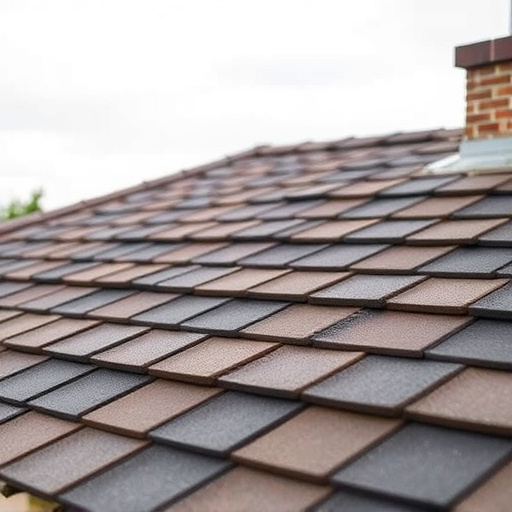
When considering the aesthetics of a building’s exterior, the choice between a flat roof and a pitched roof can significantly impact the overall style and design. Flat roofs offer a modern and minimalist look, often favored in contemporary architecture for their clean lines and simple elegance. This design choice allows for open, seamless interior spaces without the visual interruption of roof lines. On the other hand, pitched roofs are characterized by their slopes and angles, which can add a dynamic element to a structure’s silhouette, especially when incorporated with overhangs and decorative details.
The selection of roofing materials also plays a crucial role in aesthetic considerations. Metals roofing, for instance, offers a wide range of styles and benefits, from sleek, modern metal shingles to traditional designs like slate or tile. These options can enhance the architectural character of a building while providing long-lasting durability. Wood shake roofs, though requiring more maintenance tips, contribute a natural, rustic charm when used in appropriate settings. Additionally, reflective roofing materials are gaining popularity for their ability to reduce heat absorption, which not only provides energy efficiency but also adds a unique visual appeal.
Energy Efficiency: Which Roof Type Offers Better Insulation?
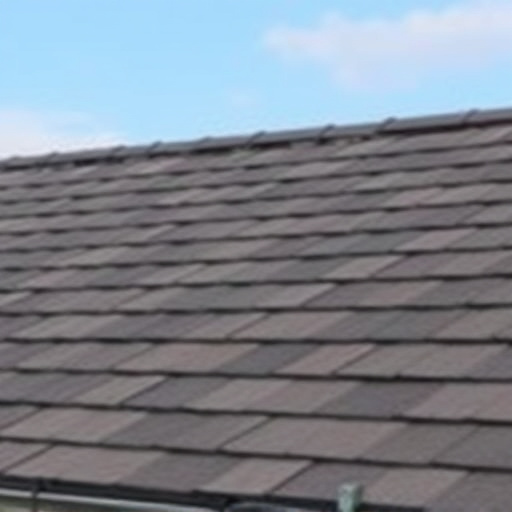
When it comes to energy efficiency and insulation, flat roofs have a distinct advantage over pitched ones. Their sleek, low-slung design allows for better air flow and reduced heat transfer, making them more efficient in both cooling and heating your home. This is particularly beneficial in regions with extreme climates, where maintaining a comfortable indoor temperature can be costly.
Choosing roofing materials that offer excellent insulation is a key factor in making your home more energy-efficient. Metals roofings, for instance, are known for their durability and long-lasting properties, providing superior protection against weather conditions while contributing to better thermal regulation. By opting for such long-lasting roof material choices, you can significantly reduce energy consumption and lower your carbon footprint, ultimately saving on utility bills in the long run.
Conclusion: Making an Informed Decision for Your Roofing Needs
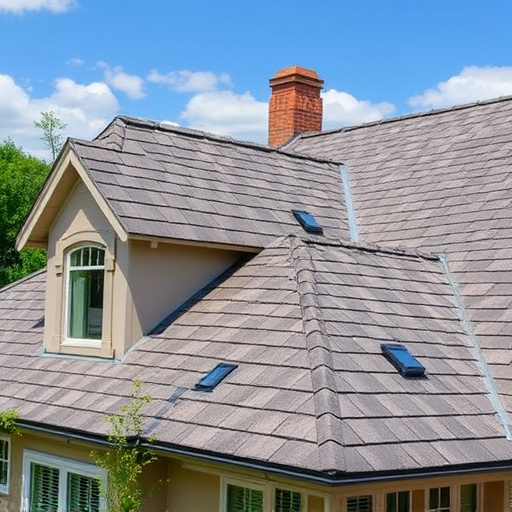
When it comes to choosing roofing materials for your property, the decision between a flat and pitched roof is a significant one. Both have their unique advantages and considerations that cater to different architectural styles and climatic conditions. Flat roofs, with their sleek and modern aesthetic, offer benefits like easier maintenance and the potential for creating rooftop garden systems, which can enhance sustainability and provide additional outdoor space. On the other hand, pitched roofs are traditional favorites, known for their timeless appeal and effective protection against harsh weather conditions.
In the realm of choosing roofing materials, several long-lasting options are available. Traditional asphalt shingles remain a popular choice due to their affordability and versatility in styles. However, as building designs evolve, so do roofing preferences. Consider your climate, architectural design, and future needs when making this important decision. Ultimately, whether you opt for a flat or pitched roof, selecting the right material will ensure your home’s protection and curb appeal for years to come.
When deciding on roofing materials, understanding the nuances of flat and pitched roofs is key. Each has unique advantages and disadvantages, influenced by factors like climate and aesthetics. Flat roofs offer simplicity and cost-effectiveness while pitched roofs provide superior durability and element protection. Longevity-wise, pitched roofs hold an edge. In terms of energy efficiency, proper insulation can make flat roofs competitive. Ultimately, the best choice depends on individual needs, ensuring a durable, functional, and aesthetically pleasing roof for years to come.
